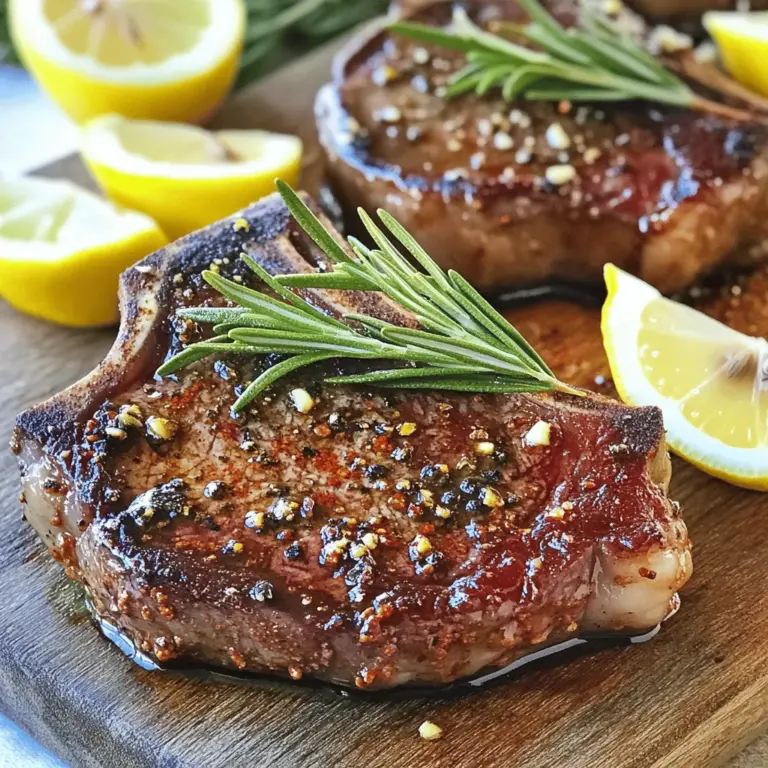Are you ready to become a steak master? My Know Your Steak Poster for Delicious Cooking Guide is here to help! Whether you’re choosing the right cut, understanding doneness levels, or mastering cooking methods, this guide has you covered. Dive into the world of flavors, textures, and temperatures, and impress your friends and family with your new skills. Let’s get started with the ultimate steak experience!
What Are the Different Types of Steak Cuts?
Steak comes in many cuts, each with unique features. Understanding these types of steak cuts helps you choose the best for your meal.
What are the most popular steak cuts?
The most popular steak cuts include ribeye, sirloin, filet mignon, and T-bone. Ribeye is well-loved for its rich flavor and tenderness. Sirloin is lean and has a beefy taste. Filet mignon is very tender but has less fat. T-bone offers two cuts in one: the tenderloin and strip steak.
How do different steak cuts vary in taste and texture?
Each cut has its own taste and texture. Ribeye has a juicy, rich flavor due to its marbling. Sirloin is firmer and chewier, giving it a robust taste. Filet mignon is buttery soft and mild. T-bone combines the tenderness of filet mignon with the boldness of strip steak.
What are the best uses for each steak cut?
Ribeye is perfect for grilling or pan-searing, as it needs high heat. Sirloin works well for stir-fries or fajitas because it cooks quickly. Filet mignon shines when grilled or roasted, often served with rich sauces. T-bone is great for sharing, making it ideal for family meals.Enjoy the cooking and savor each bite!
How Do You Understand Steak Doneness?
Understanding steak doneness is key to great cooking. There are five main levels of doneness: rare, medium rare, medium, medium well, and well done. Each level has a unique texture and flavor.
What are the different doneness levels for steak?
1. Rare: This steak is cool and red in the center. It reaches about 125°F.
2. Medium Rare: This is warm and red in the center. It is perfect at 135°F.
3. Medium: This steak has a pink center and is cooked to 145°F.
4. Medium Well: This is mostly brown with a slight hint of pink at 150°F.
5. Well Done: This steak is brown throughout and reaches about 160°F or more.
Each doneness level affects the steak’s juice and flavor.
How can you accurately check steak doneness?
The best way to check doneness is by using a meat thermometer. Insert it into the thickest part of the steak. You want to avoid touching bone or fat. This gives you the most accurate reading.
If you don’t have a thermometer, you can use the touch test. Press the steak with your finger. A rare steak feels soft, while a well-done steak feels firm. The touch test takes practice, but it helps you learn.
What factors influence the doneness of steak during cooking?
Several factors affect doneness. The thickness of the steak plays a big role. Thicker cuts take longer to cook. The cooking method also matters. Grilling, broiling, or pan-searing can change how heat affects the meat.
Resting the steak after cooking is crucial. This allows juices to settle back into the meat. If you cut into it right away, those juices run out. For a great steak, let it rest for about five minutes.
Now that you know how to understand steak doneness, you’re ready to cook the perfect steak.

What Is the Best Way to Cook Steak?
The best way to cook steak often depends on your taste and what you have on hand. I find that grilling and pan-searing are two great methods to achieve a delicious steak.
What are the most effective cooking methods for steak?
Grilling is a popular way to cook steak. It gives a nice char and smoky flavor. Pan-searing is also great, especially if you want a nice crust. You can use a cast-iron skillet for the best results. Both methods can give you juicy, tender meat when done right.
How does the cooking method affect steak flavor and tenderness?
The cooking method greatly impacts flavor and tenderness. Grilling adds smoke and heat, enhancing the natural taste of the beef. Pan-searing gives a crispy outside while keeping the inside juicy. Cooking steak at high heat helps seal in those tasty juices. This is key for a flavorful bite.
What tips should you follow for grilling or pan-searing steak?
For grilling, preheat your grill until it is very hot. This helps create a good sear. When pan-searing, use a bit of oil to prevent sticking. Do not flip the steak too often; let it cook undisturbed to form that nice crust.recipe above.
What Temperature Should Steak Be Cooked To?
Cooking steak to the right temperature is key for great taste. Here are the recommended internal temperatures for various steak doneness:
- Rare: 120-125°F. This steak is cool and red in the center.
- Medium Rare: 130-135°F. The center is warm and red. This is a favorite for many.
- Medium: 140-145°F. The center is pink and warm.
- Medium Well: 150-155°F. This steak has just a hint of pink.
- Well Done: 160°F and up. It is brown throughout with no pink.
To properly use a meat thermometer, insert it into the thickest part of the steak. Make sure not to touch bone or fat. This gives an accurate reading. Always let your steak rest for five minutes after cooking. This helps keep it juicy.
When checking steak temperature, avoid these common mistakes. Don’t guess by cutting into the steak. This will let juices escape. Also, don’t use a thermometer that isn’t meant for meats. Make sure it is accurate for best results.It includes simple steps to make cooking easy. Enjoy your perfectly cooked steak!

How Can You Enhance the Flavor of Your Steak?
To boost the flavor of your steak, focus on seasonings and marinades. The right mix can elevate your dish. For example, a simple blend of salt, pepper, and garlic powder works wonders. You can also try smoked paprika for extra depth. Use these steak seasoning ideas for ribeye or sirloin cuts.
Now, let’s talk about marinades. They can really add flavor. A mixture of olive oil, balsamic vinegar, and herbs can make your steak sing. Allow the steak to marinate for at least one hour. This will help the flavors soak in deeply.
Next, consider marbling. Marbling refers to the fat found within the meat. The more marbling, the more flavor your steak will have. This fat melts during cooking, adding richness. Look for cuts like ribeye for a juicy bite.
What about unique flavor enhancements? You can use things like citrus zest or fresh herbs. A squeeze of lemon or a sprinkle of thyme can brighten up the dish. You can even experiment with different spices to find your favorite flavor profiles.It gives you a simple way to cook a tasty steak. Use these tips to make each bite more delicious!
What Are Some Popular Steak Recipes to Try?
When it comes to steak, many recipes shine. You can try classic steak dishes like steak frites or a delicious steak salad. Both options are simple yet packed with flavor. For family gatherings, a big grilled steak platter is a hit. It allows everyone to share and enjoy.
Special occasions call for something memorable. A filet mignon with a rich sauce can impress guests. You can also roast a whole ribeye for a festive meal. The presentation alone makes it feel special.This recipe uses simple ingredients to enhance the steak’s natural taste. It includes olive oil, garlic powder, and smoked paprika. The herbs and lemon add a lovely touch, making it a perfect dish for any occasion.
Adapting steak recipes can be easy. You can change seasonings or sides to match your gathering’s theme. For a summer barbecue, pair steak with a fresh corn salad. For winter, serve it with mashed potatoes and green beans.
Remember, steak cooking times vary based on thickness. Always check for doneness to ensure the best flavor. Enjoy experimenting with these popular steak recipes!
Understanding the types of steak cuts and how to cook them enhances your meals. Each cut offers unique taste and texture, from tender filets to flavorful ribeyes. Knowing doneness levels and cooking methods transforms how you enjoy steak. With the right seasoning and recipes, you can make every steak special. Explore these tips, and you’ll impress family and friends. Remember, great steak is about understanding the meat and cooking it well. Enjoy your cooking journey!



